Best waterproof camera 2025: we've tested the finest cameras for underwater shooting
Make a splash with the best waterproof cameras
Waterproof cameras are a category that I and my team of experts know well – we've spent years testing photography kit in the toughest situations. Beyond holiday pool snaps, the best waterproof cameras in 2025 have evolved into versatile, rugged tools for capturing stills and video in all conditions.
Take the OM System Tough TG-7. It’s a compact yet capable model that’s become a poster child for waterproof cameras. In testing, it stood up to everything I threw at it. While its image quality could be better, I found it reliable and easy to use, even underwater. That’s a winning setup, but there might be a better one for your needs and budget. For example, if underwater video is your focus, the DJI Osmo Action 6 delivers fantastic results.
In the list below, I've recommended my six favorite waterproof cameras, based on the results of comprehensive real-world testing. I've also featured a few alternative options worth considering. Each entry has been assessed with waterproof performance in mind and labeled for a different kind of buyer. I'll be keeping this list regularly updated with the latest waterproof cameras as and when they're reviewed.

I'm TechRadar's Cameras Editor, and have worked for more than 15 years as a photographer and technology journalist, giving me a unique insight into what makes an excellent camera. I've had the opportunity to shoot with a whole range of kit during my career, including many of the best waterproof cameras. I've included a wide variety of waterproof cameras in this guide, from tough models designed to capture stills at impressive depths, to action cameras that make it easy to shoot sharp footage of your watery adventures.
Why you can trust my choices
Every one of the waterproof cameras featured in this guide has been extensively tested by one of TechRadar’s experienced reviewers – either me or a member of my expert team. Collectively, we have decades of experience testing photography gear. Most of our team is based in the UK, which is where we put the best waterproof cameras through their paces.
☑️ 100s of cameras reviewed
☑️ 15 years of product testing
☑️ Over 16,000 products reviewed in total
☑️ Nearly 200,000 hours testing tech
Myself and the team test all kinds of waterproof cameras, from rugged point-and-shoots to action cameras designed for video. Image quality and durability are key areas of focus, but I also consider how easy a waterproof camera is to use. To assess this, I'll spend weeks with each camera, using them in a range of scenarios, from rainy hikes to underwater pool swims.
I aim to evaluate each waterproof camera in challenging conditions which mirror the real-world situations one might face as a user. I look at how well they handle when wet and how the results hold up compared to smartphones. My experts and I have distilled our in-depth feedback here, to help you make a confident, informed choice ahead your next adventure.
I also consider the practicality of each camera’s size, weight and build in the real world. I assess how easily each camera can be used during various activities, specifically those in and around water, to check both its practicality and functionality.
To accurately assess battery life, we conduct usage tests to replicate common scenarios, such as burst shooting and a series of video clips. The aim is to see how actual figures stack up against claimed longevity.
Finally, I test any extra features to see how they enhance the overall user experience, including GPS and Wi-Fi.
Meet the team
My team of reviewers is the best in the business. We take pride in our honest, real-world reviews, and have covered all the latest waterproof camera worth your attention.

Lauren Scott is an experienced journalist and freelance photographer based in Bath, UK. She's been in the industry for over ten years; as the former Managing Editor of our sister site Digital Camera World.

Sam has been covering consumer electronics as a journalist for over 20 years, contributing to titles including Stuff, Wired, T3 and GQ while reporting on and reviewing everything from vintage cameras to video games. He now specialises in photo and video gear.

Peter is a photographer, writer, and journalist who served as Editor for Digital Photographer Magazine, working on the title for 8 years. He has also been a commissioning editor on numerous book projects, a regular contributor to many other international publications.
Top 3 picks
Want to get straight to the best waterproof camera? Use my round-up below to quickly find a waterproof camera that suits you. You can find out more about it by jumping to the full write-ups using the links.
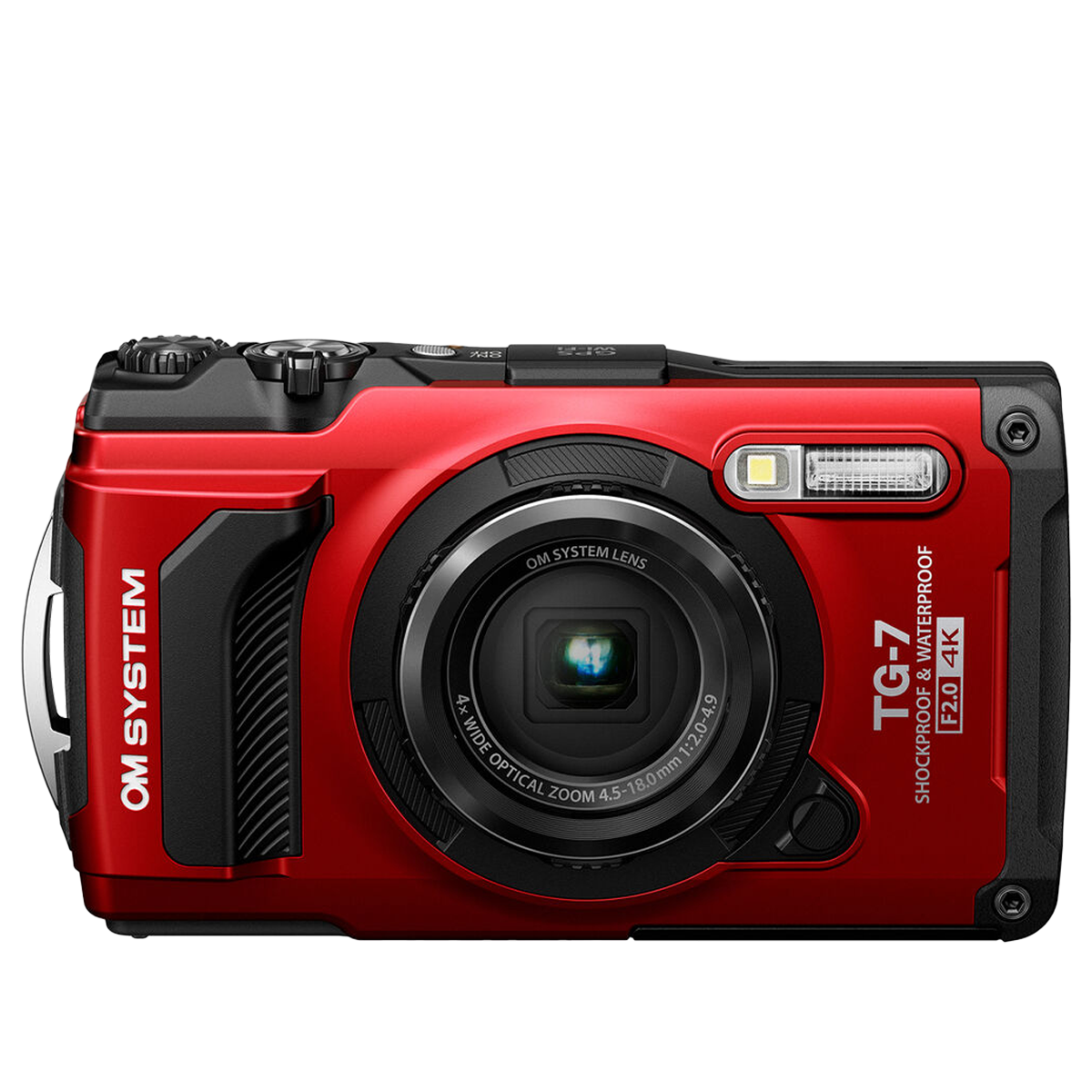
The best waterproof camera overall
Compact but rugged, the Tough TG-7 is a great grab-and-go waterproof camera with a generous set of photography features for the price.
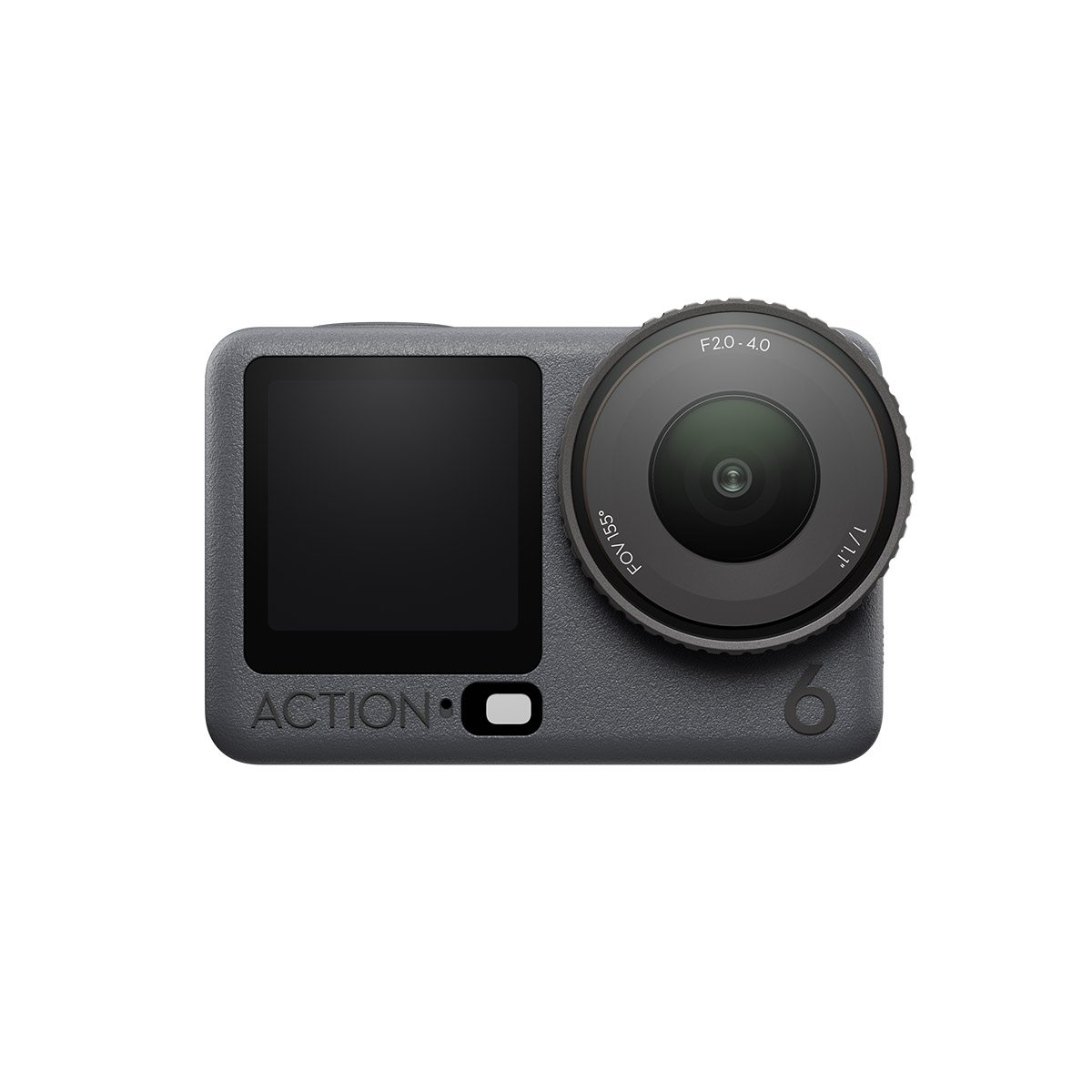
The best waterproof camera for low light
Waterproof to 20m and up to 60m with case, the Osmo Action 6 is our top action camera pick for underwater adventures, complete with excellent low-light image quality thanks to its 1/1.1-inch sensor.
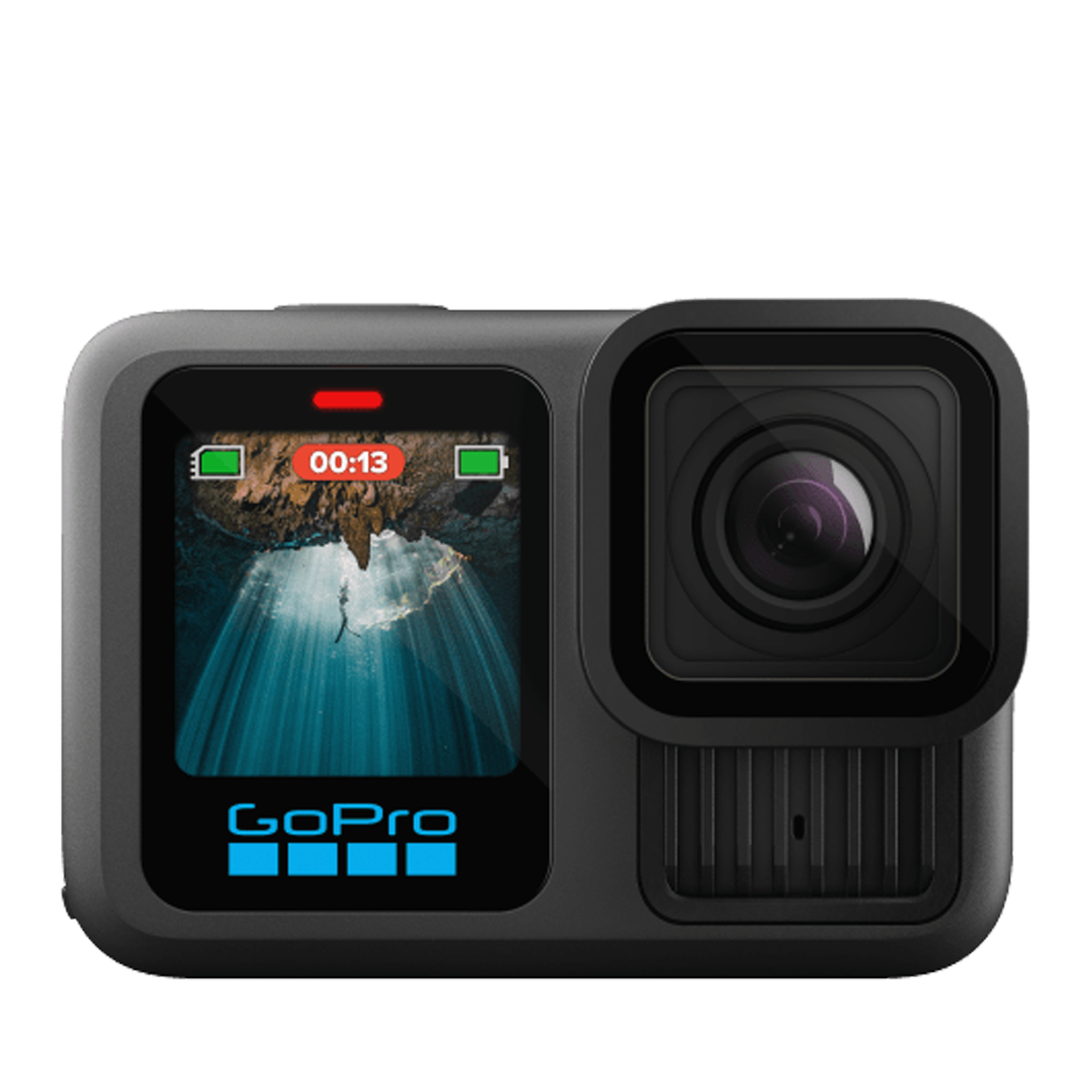
The best waterproof action camera for accessories
GoPro’s flagship is packed with video tricks, is waterproof to 10m or 60m with a case, and has enviable accessories, including a waterproof charging dock.
Best by use-case

The best waterproof camera with LED lights
5x optical zoom gives the WG-60 versatility when framing, while six LED macro lights around the lens are handy for illuminating underwater subjects.
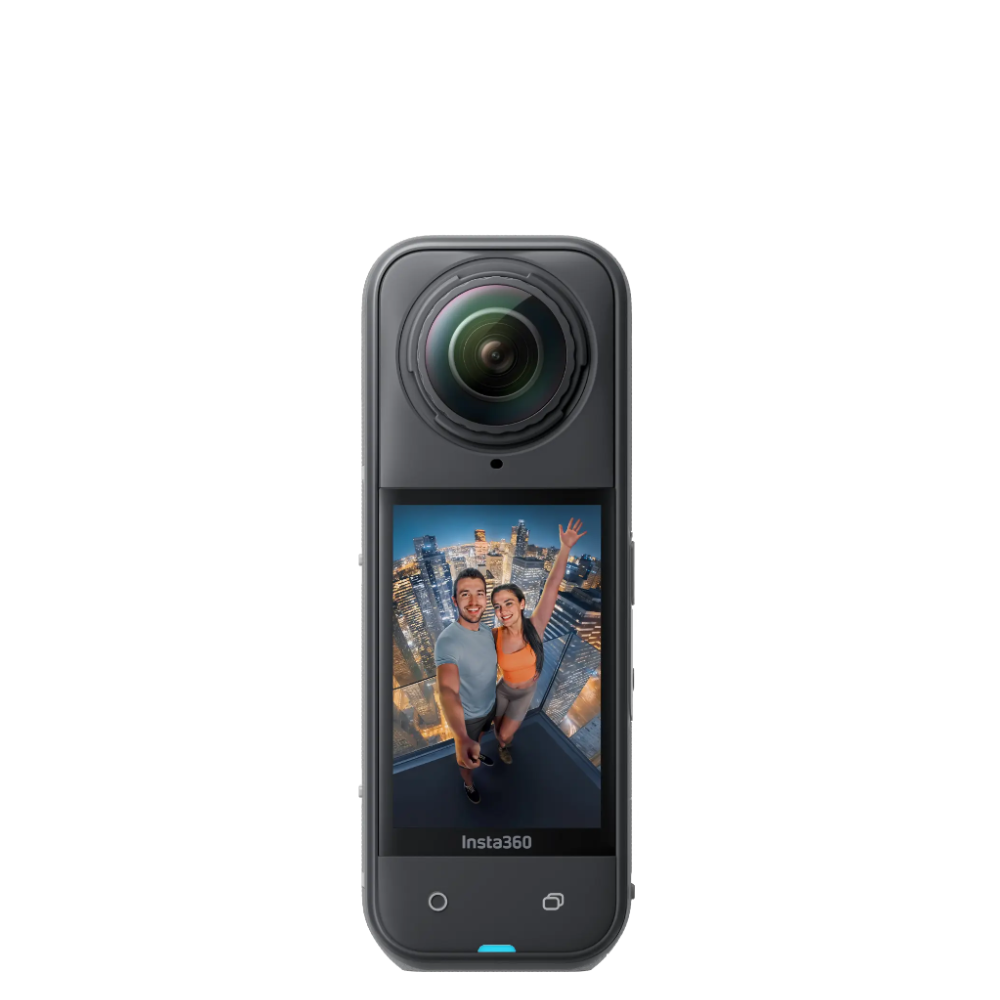
The best 360 degree waterproof camera
Waterproof to 15m, this class-leading 8K camera lets you shoot underwater footage in 360 degrees, capturing truly unique footage.
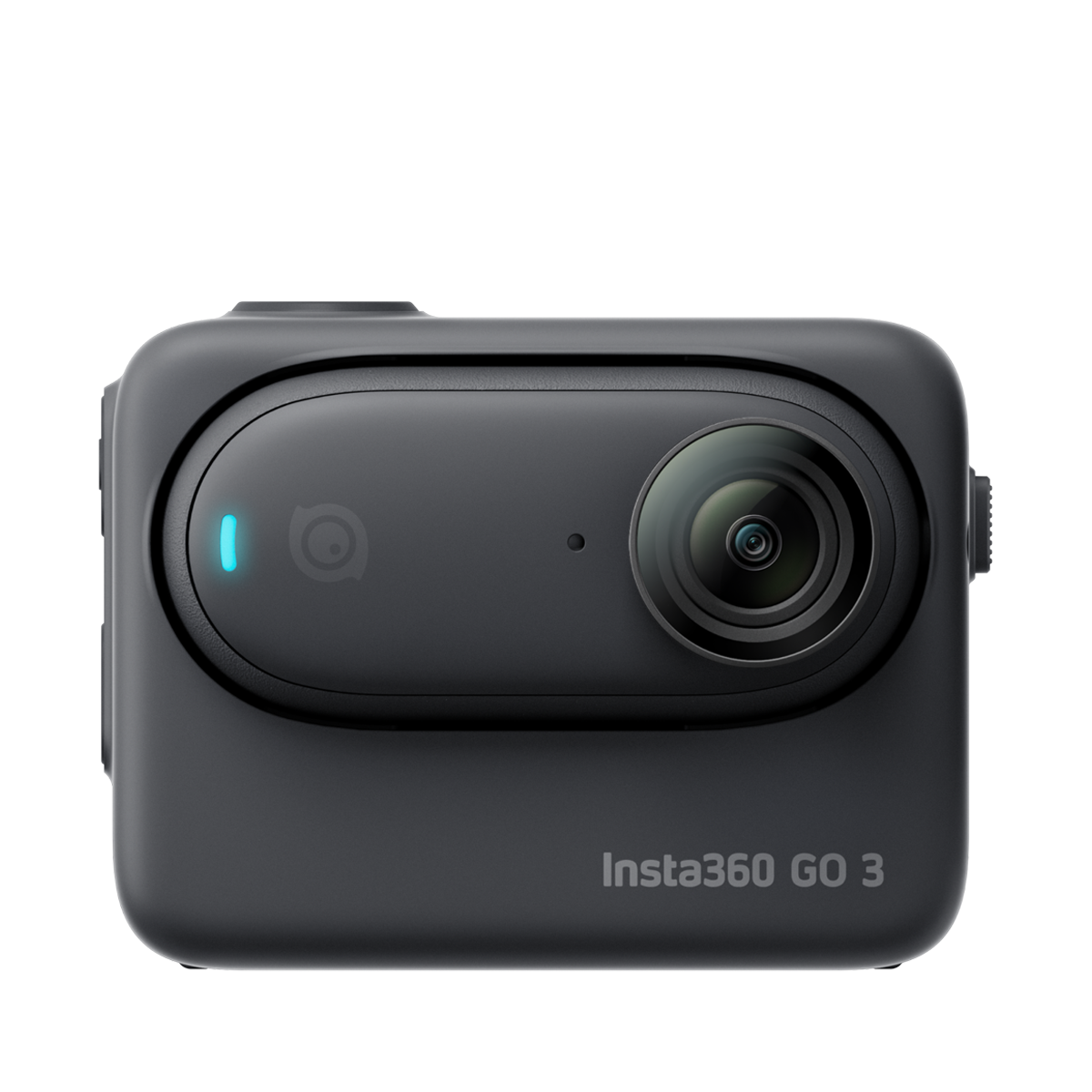
The best miniature waterproof camera
Its Action Pod is only splashproof, but the tiny Insta360 Go 3S itself is waterproof to 10m, while AquaVision 2.0 enhances underwater video in the app.
The best waterproof cameras in 2025
Why you can trust TechRadar
Below you'll find full write-ups for each of the best waterproof cameras in our list. We've tested each one extensively, so you can be sure that our recommendations can be trusted.
The best waterproof camera for most people


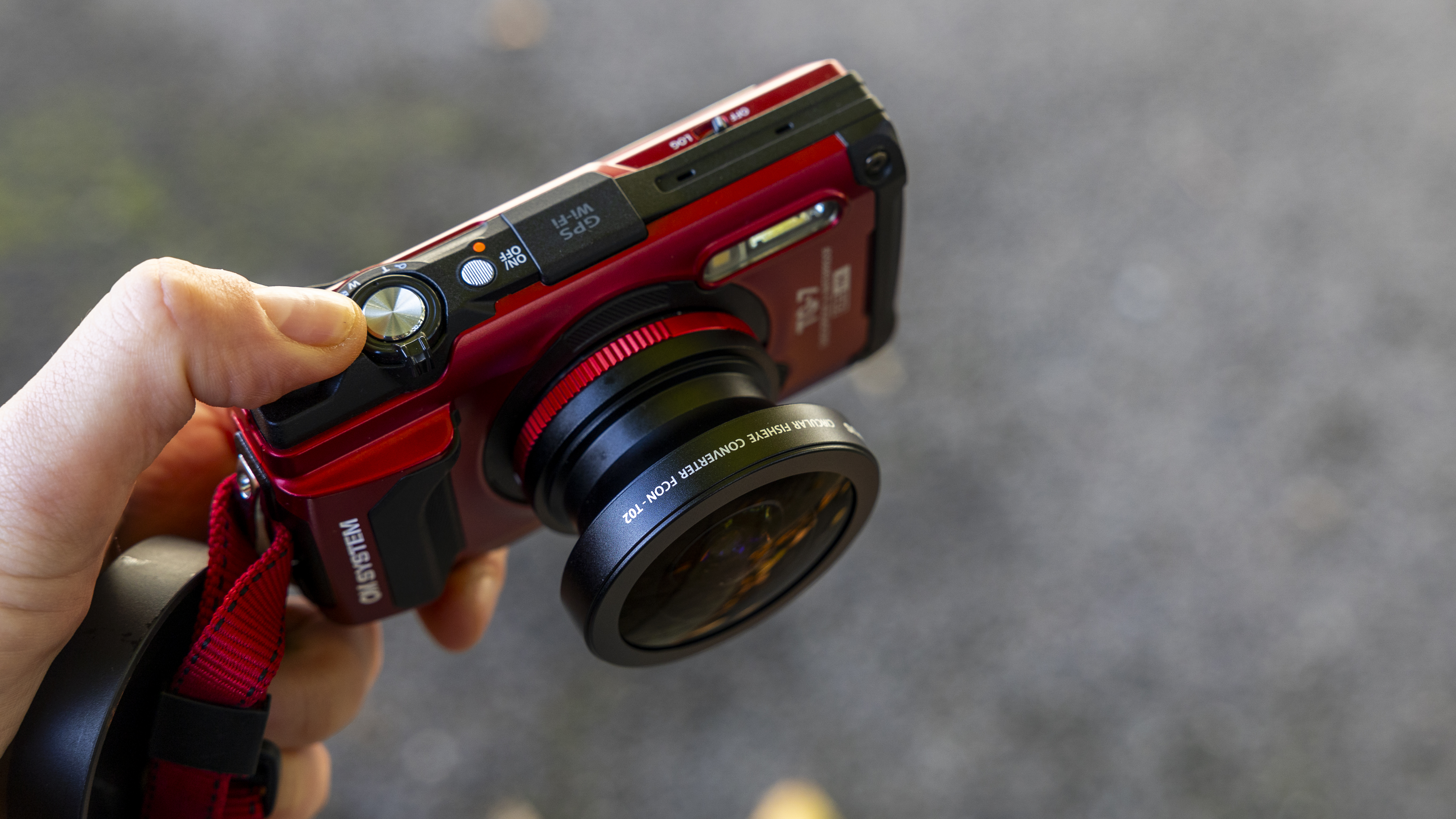

Specifications
Reasons to buy
Reasons to avoid
✅ You’re into underwater photography: The TG-7 has a number of useful shooting modes, including white-balance adjustments based on water depth.
✅ You want a really tough camera: Besides being waterproof to 15m, the TG-7 is also protected against dust, sand and drops, as well as freezing temperatures.
❌ You want the best possible image quality: Even with its scene modes, the TG-7 is limited by its 12MP sensor, which lags behind the latest smartphones.
❌ You already own the Tough TG-6: While the TG-7 is an improvement, it doesn’t do enough to justify swapping from the previous model if you already have it.
It’s not a huge upgrade over the Tough TG-6, but with a rugged, pocket-friendly build and plenty of photography features, we think the Tough TG-7 is a great grab-and-go option for most people. Although its 3-inch screen isn’t touch-sensitive, its tactile array of buttons makes it easier to handle than a GoPro in tricky conditions, particularly for beginners. And as the name suggests, this is a camera to take anywhere: waterproof to 15m, it can also survive dust, drops, crushing and freezing.
In testing, we found that image quality from its 12MP sensor can’t compete with many modern smartphones, even with a fast f/2 aperture at the wide end of the 25-100mm zoom range. 4K/30p video also looks a little dated. Yet the TG-7 does benefit from a surprising number of shooting modes, including macro focusing and white balance presets which match different water depths. The real benefit lies in its practicality, allowing you to shoot without fear in the waves.
Read our in-depth OM System Tough TG-7 review
The best waterproof camera for low light
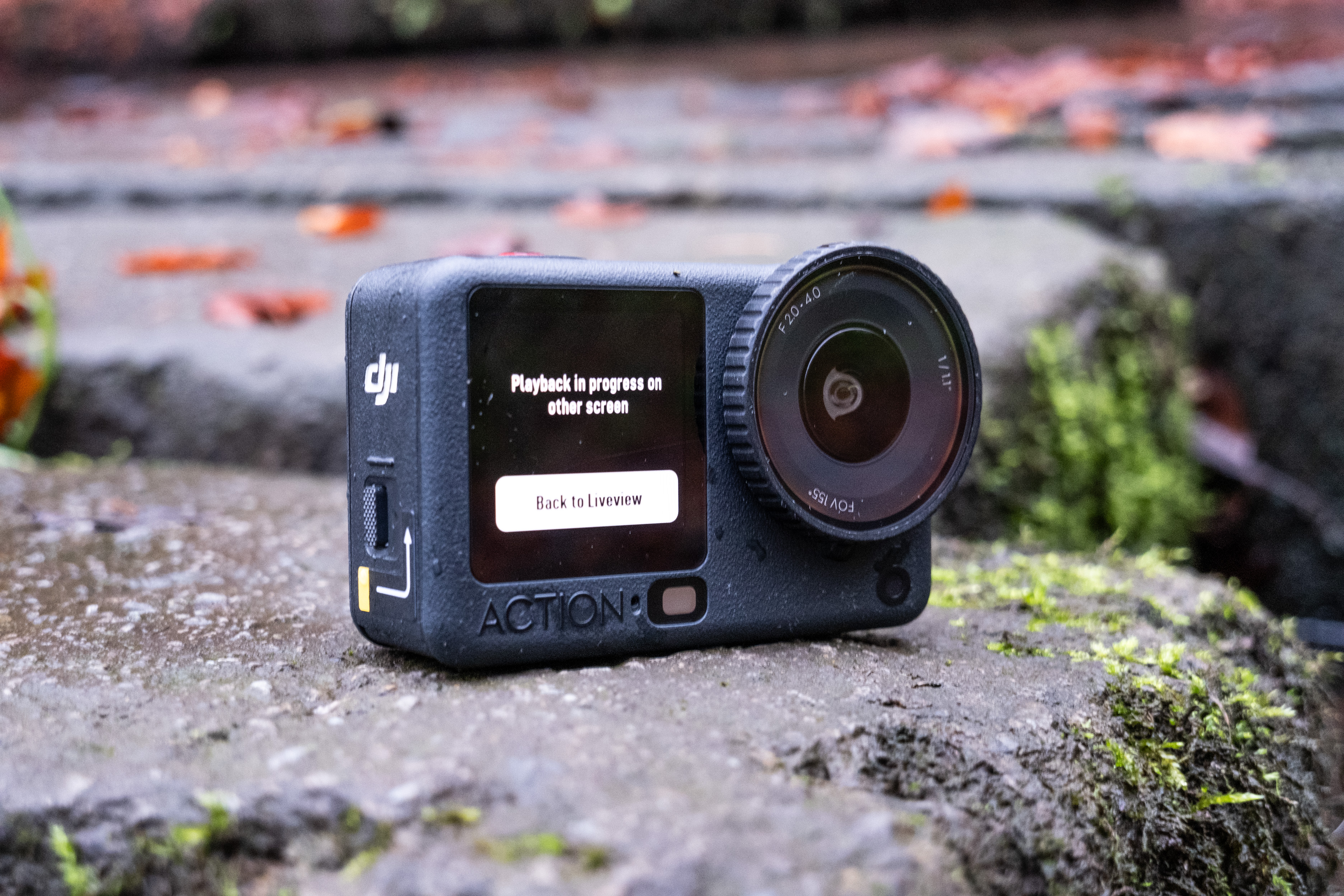

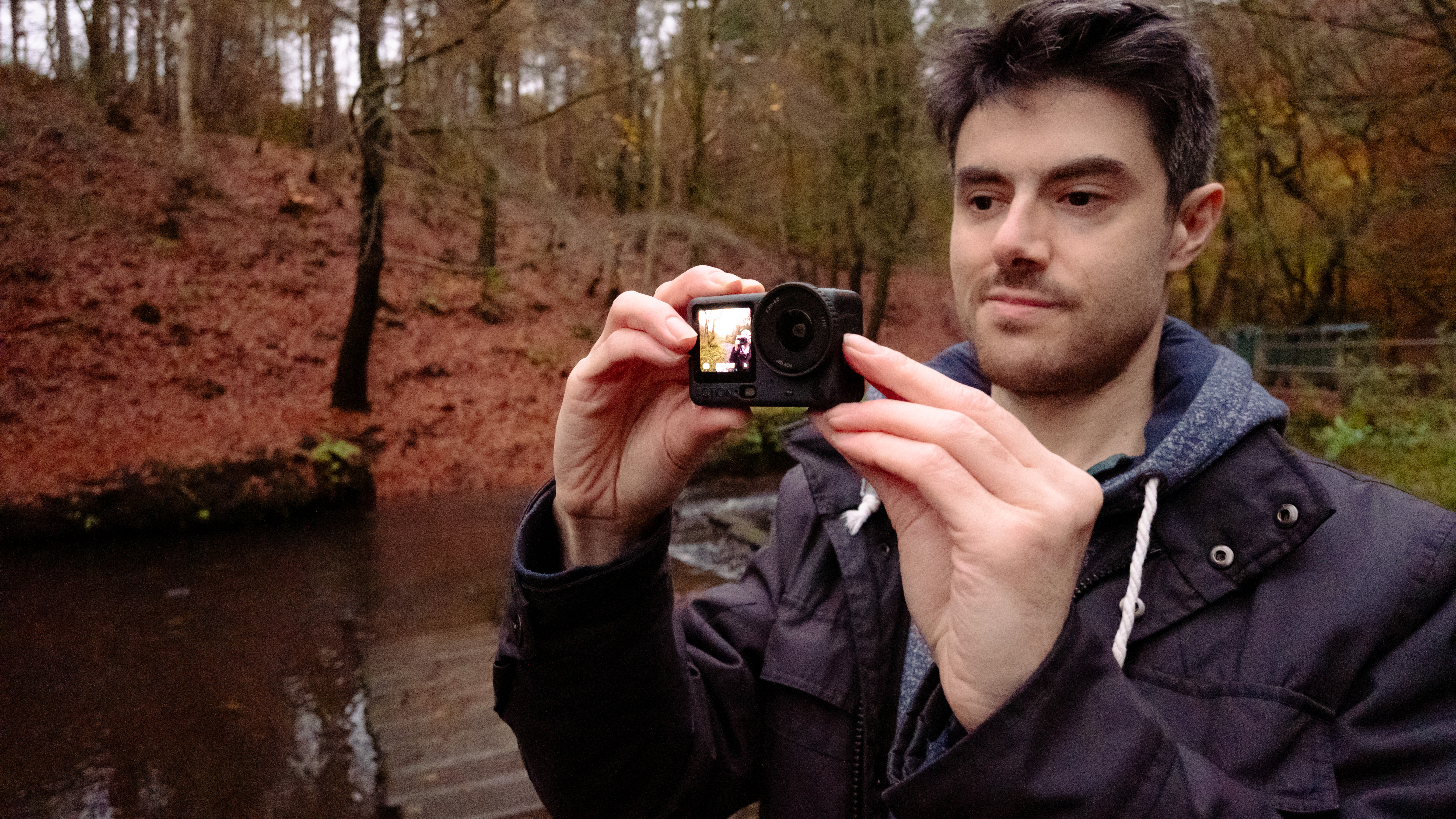
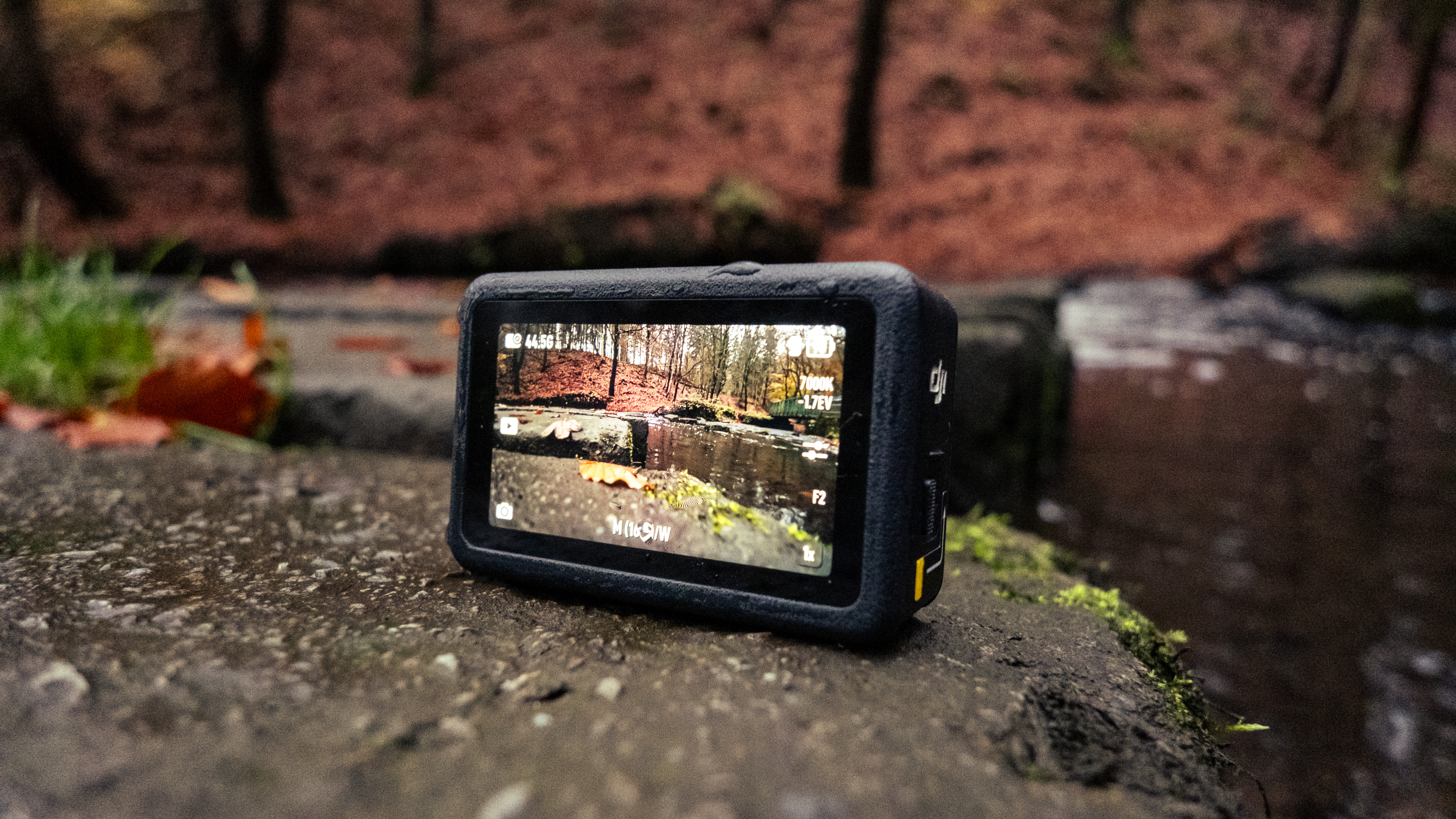
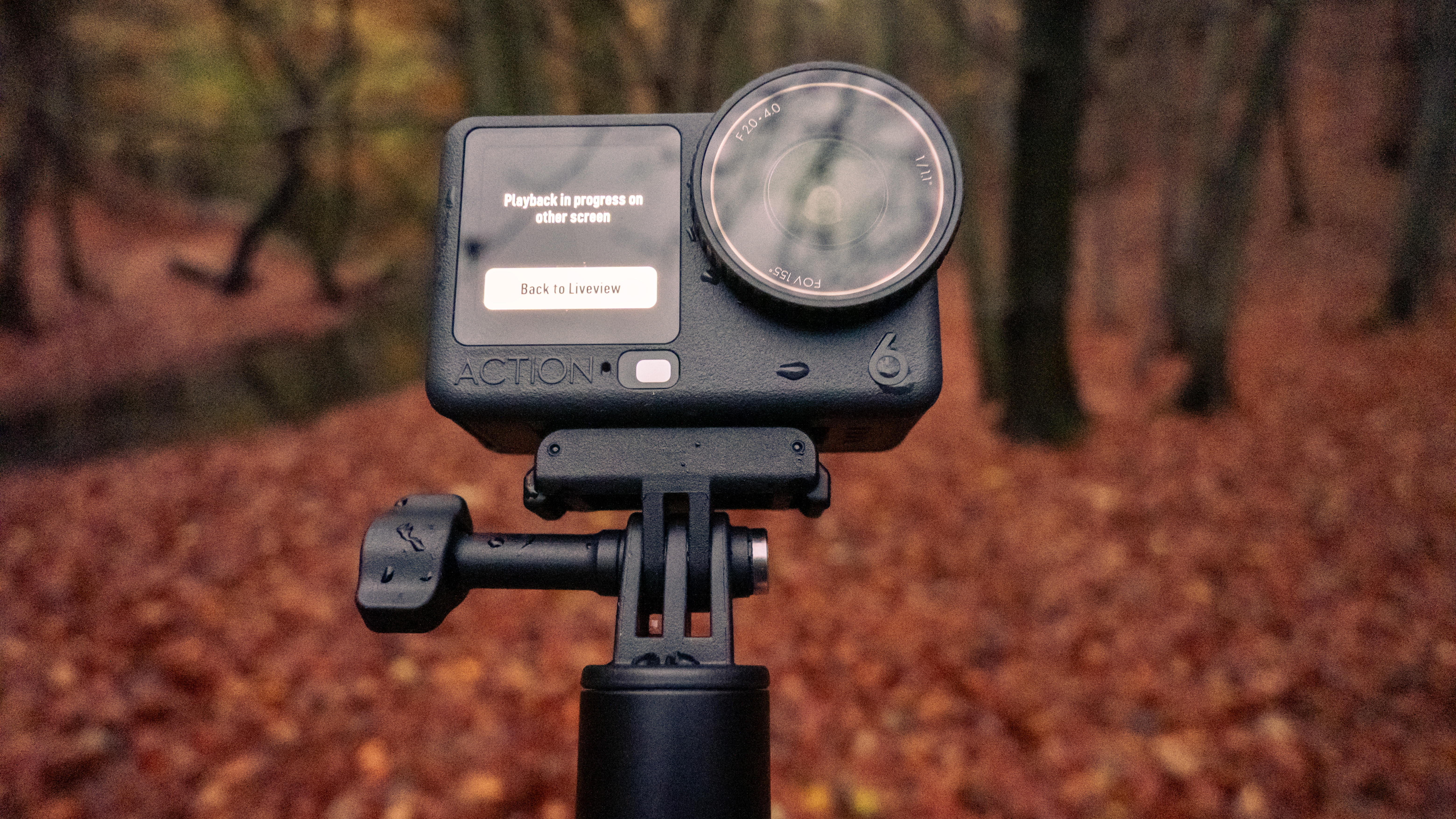
Specifications
Reasons to buy
Reasons to avoid
✅ You aren't married to GoPro: Unless you own loads of GoPro mods, there's plenty to like about the direction DJI is heading with its action cameras.
✅ You want high-end image quality: The pro-friendly options and low light and slow-motion capabilities make this a camera for every shooting scenario.
❌ You want something super simple: The Osmo Action 6 is designed with experienced videographers in mind. Newbies may find the range of options intimidating.
❌ You already own lots of GoPro gear: Invested in the GoPro mod system? You'll probably want to stick with the brand rather than replace it with DJI equivalents.
With the Osmo Action 6, DJI has cemented itself as a real threat to GoPro's market dominance. The Action 6's 1/1.1-inch image sensor delivers superb video and photo quality in bright conditions and highly impressive performance in low light – areas where action cameras have struggled in the past. I was immediately impressed by how user-friendly this camera is; the menus are easy to navigate, and both the 2.5-inch rear LCD and 1.46-inch front screen are responsive and clear, even when wet. The design is familiar if you've used previous Osmo Action models, but that's no bad thing – why change what works? Battery life is strong too, with a genuine four hours of mixed shooting delivered in my tests.
The larger sensor enables better detail and colour rendition than its predecessor, the Osmo Action 5 Pro, with respectable noise performance even in challenging conditions. There's 10-bit D-Log M recording for pro-level grading, though I did notice some aggressive default sharpening in places. The RockSteady electronic image stabilization is effective for creating smooth tracking shots, and connectivity with DJI's wireless mics is seamless. DJI's expanding modular system – including the Macro Lens and FOV Boost Lens – makes this feel like a genuinely pro-grade action camera. Yes, there's no 8K or 5.3K like the GoPro Hero 13 Black, but I think 4K is more than sufficient for most uses, and the general image quality here is excellent.
Read our in-depth DJI Osmo Action 6 review
The best waterproof action camera for accessories

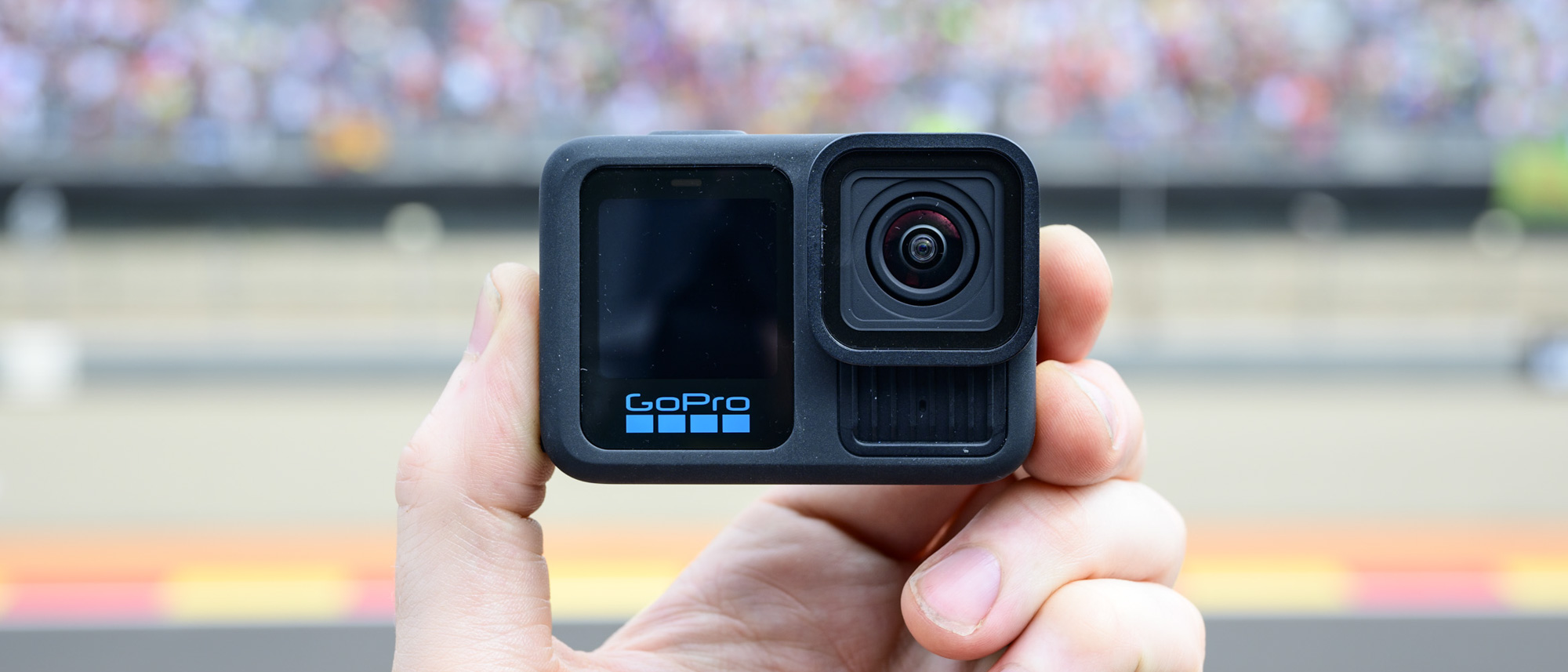
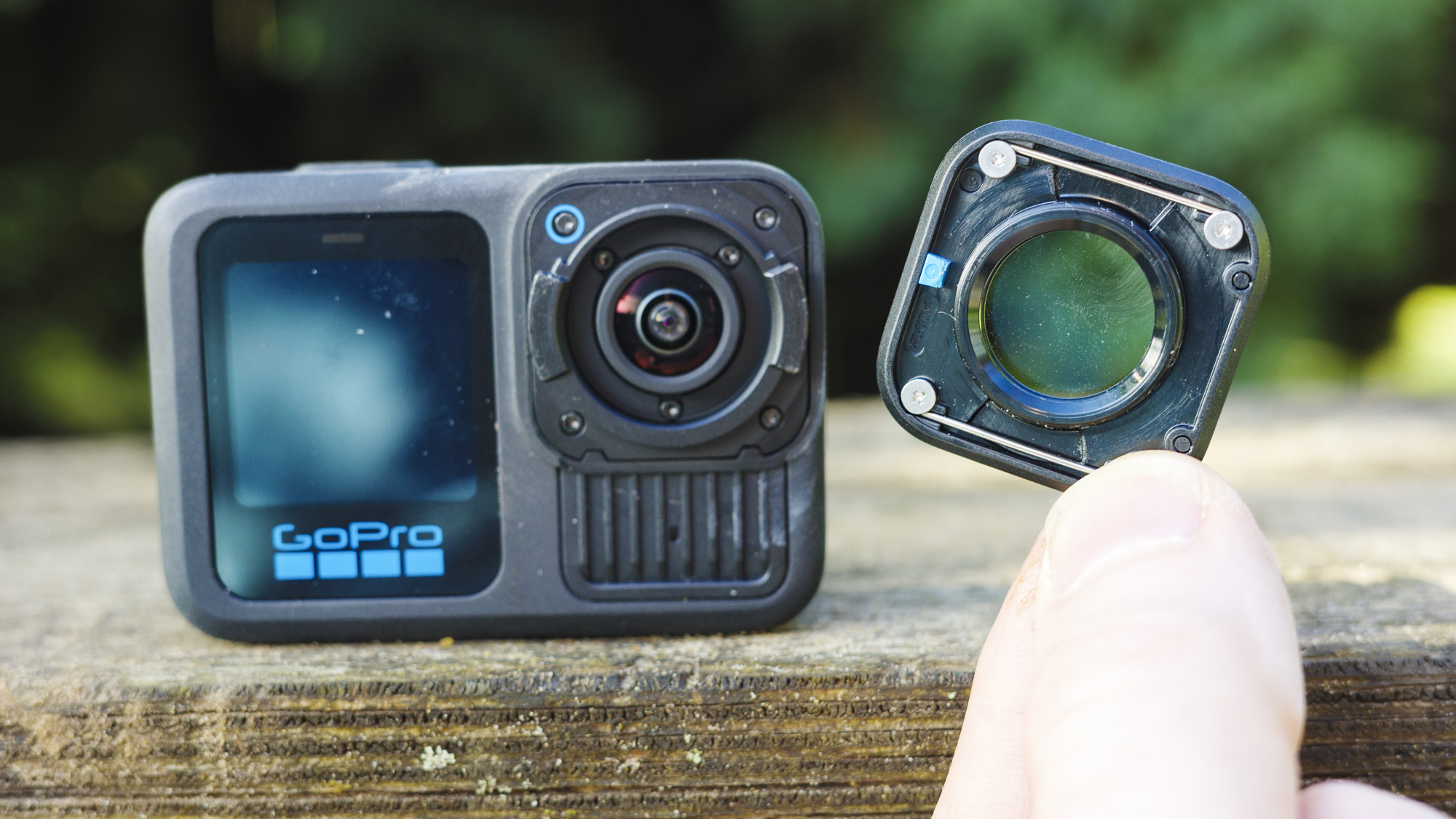
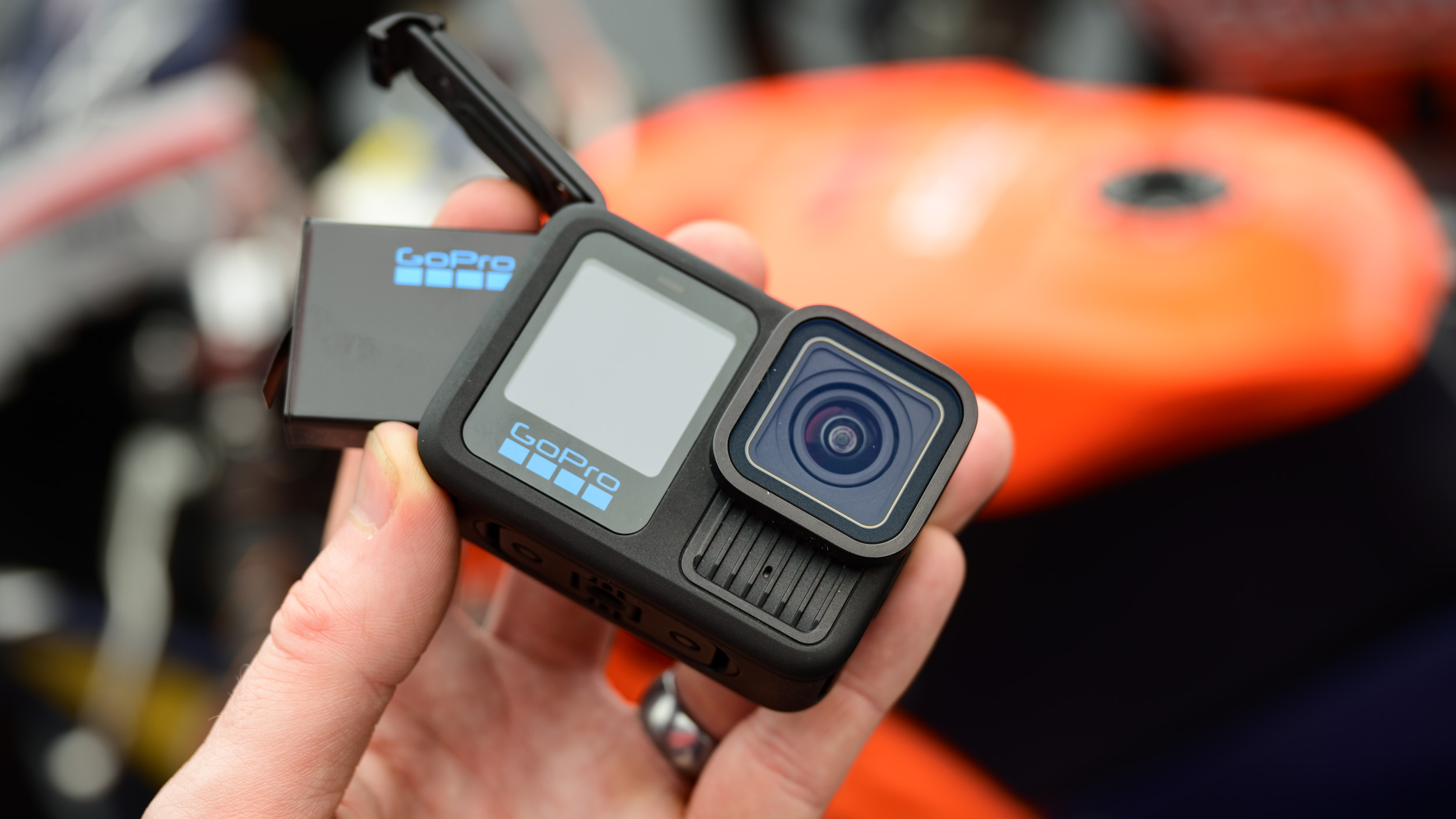
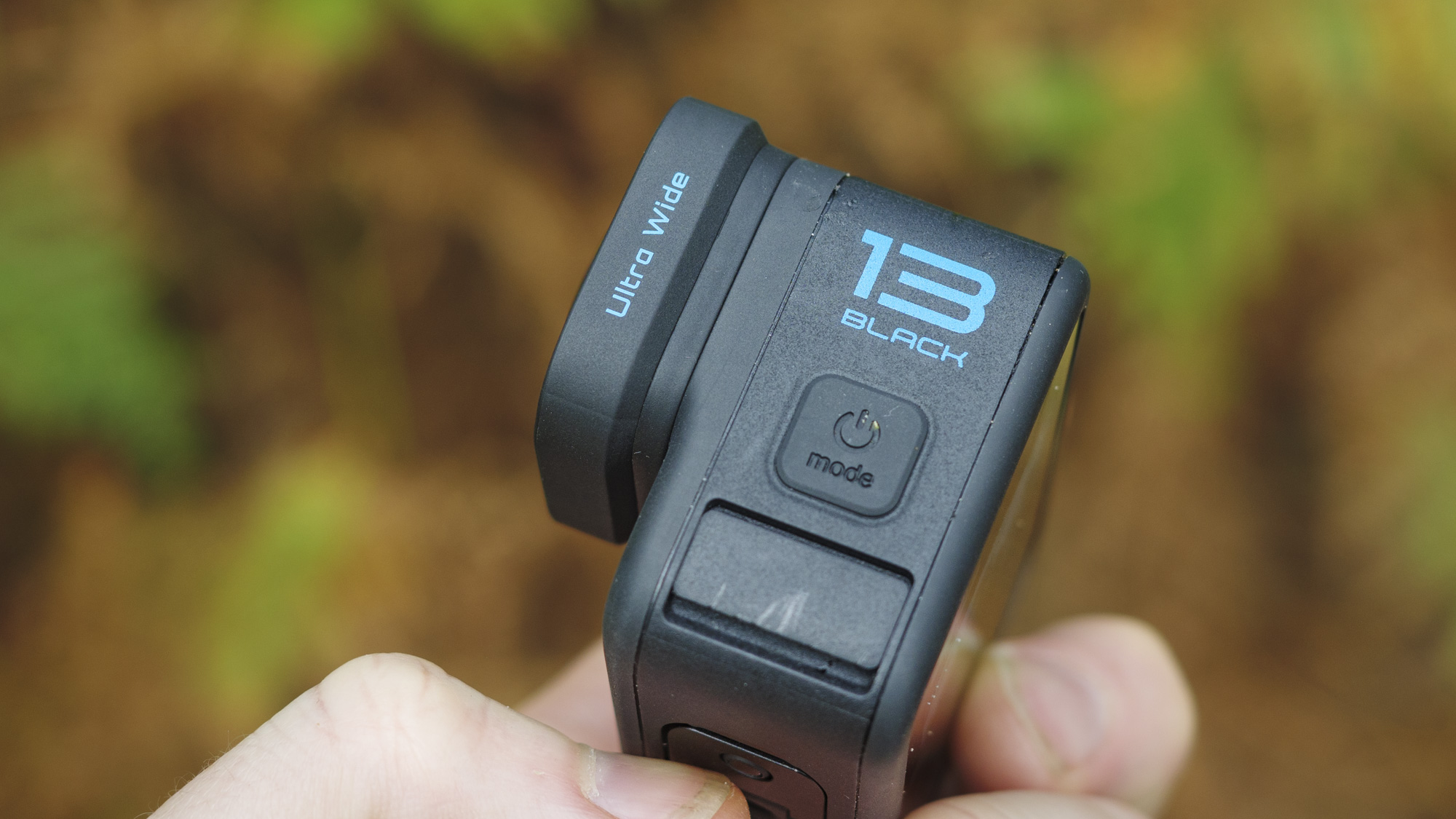
Specifications
Reasons to buy
Reasons to avoid
✅ You plan to shoot for social: Because it shoots native 5.3K with an 8:7 aspect ratio, the Hero 13 makes it easy to reframe footage for different channels.
✅ You like the idea of accessories: As well as numerous underwater add-ons available for the Hero 13’s mounting feet, Lens Mods can get you different looks and capture details.
❌ You shoot in dim underwater conditions: The Hero 13 Black is at its best when things are bright, with noise still an issue when you shoot in the murky depths.
❌ You want class-leading battery life: Even with GoPro’s larger Enduro battery inside, the Hero 13 can't compete with the Osmo Action 5 Pro.
Physically, the Hero 13 Black is almost identical to its predecessor, including its 10m waterproof rating which can be upped to 60m with GoPro's underwater housing. It likewise uses an 8:7 aspect ratio sensor to capture 5.3K video that can easily be cropped for social, while itss slow motion recording has been improved for cinematic effects. With the addition of HDR video and GoPro's 10-bit Log color profile, we found the Hero 13 Black able to capture sharp, smooth and dynamic video in bright conditions, plus you can snap 27MP photos. Low-light remains an issue for video quality, meaning the GoPro and can't compete with DJI's Osmo Action 5 Pro especially for deep water adventures.
GoPro brought back built-in GPS, with the option to include performance stickers in your videos, including altitude / depth. There's also magnetic mounting now, and so there's three ways to attach accessories. And it's GoPro's range of accessories that sets its action cameras apart. Not only do you have a choice of optional Lens Mods, including Macro for close ups such as coral, or the ultra-wide for a wider perspective, but the camera's door can be removed and replaced with a new waterproof charger accessory. Trail its cable out of the water to your power source, and the Hero 13 Black can have unlimited power supply, ideal for long videos in the pool. GoPro also improved battery life in its latest flagship, but its another area that the Osmo Action 5 Pro outshines the Hero 13 Black.
Otherwise, the same front and rear screens are handy for framing yourself at sea, even if the rear touch interface doesn’t work underwater. If you want a feature-packed action cam that can shoot sharp video above and below water, with unique accessories especially lenses, then the GoPro Hero 13 is our top pick.
Read our in-depth GoPro Hero 13 Black review
The best waterproof camera with LED lights
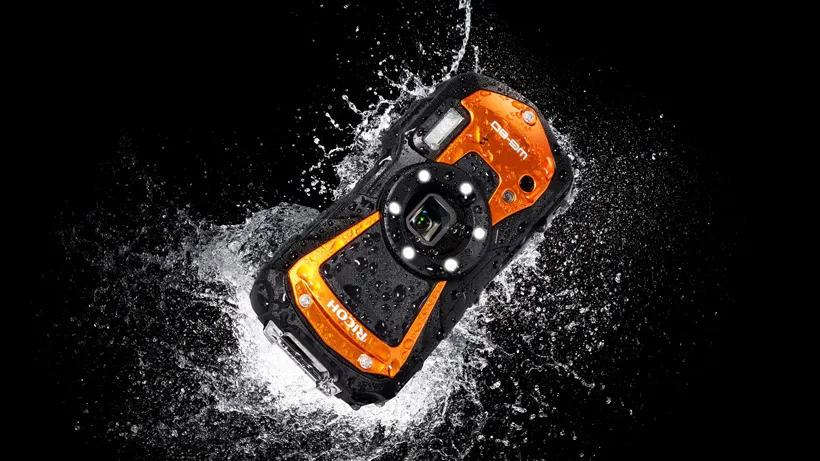
4. Ricoh WG-80
Specifications
Reasons to buy
Reasons to avoid
✅ You need something really tough: As well as being waterproof to 14m, the WG-80 is crushproof, shockproof, dust-proof and freeze-proof.
✅ You want a versatile shooting tool: The WG-80 combines a 5x zoom lens with close-focusing for macro shots, meaning you can cover a range of subjects.
❌ You want the best image quality: Stills from the WG-80 can be disappointing and its sensor is beaten in high-contrast scenes by most modern smartphones.
❌ You plan to shoot a lot of video: With footage capped at 1080p/30fps, there are better options in this list for recording video underwater.
The WG-80 from Ricoh has some pretty strong tough credentials: it's waterproof to a depth of 14m/45.9ft and shockproof from a fall of up to 1.6m/5.2ft, while it should withstand a force of up to 100kg/220lbs. It's also dust-proof and can operate in temperatures down to -10°C/14°F. While we think it can't quite compete with the OM System Tough TG-7, it also costs quite a lot less.
The 5x optical zoom has a pretty broad focal zoom range, from 28-140mm, while there are six LED macro lights dotted around the front of the lens barrel to deliver bright and uniform lighting round your subject – ideal when shooting underwater subjects. The macro lights also provide other useful functions, such as the LED Lighting mode, which uses the lights for adding light to portraits in poor light, delivering a more flattering look than the WG-60’s dedicated flash.
Ricoh has since launched the WG-90, but it was only a modest upgrade and it's much pricier than the WG-80 with its current sale price, so we think the older WG-80 is the better buy.
The best 360 degree waterproof camera
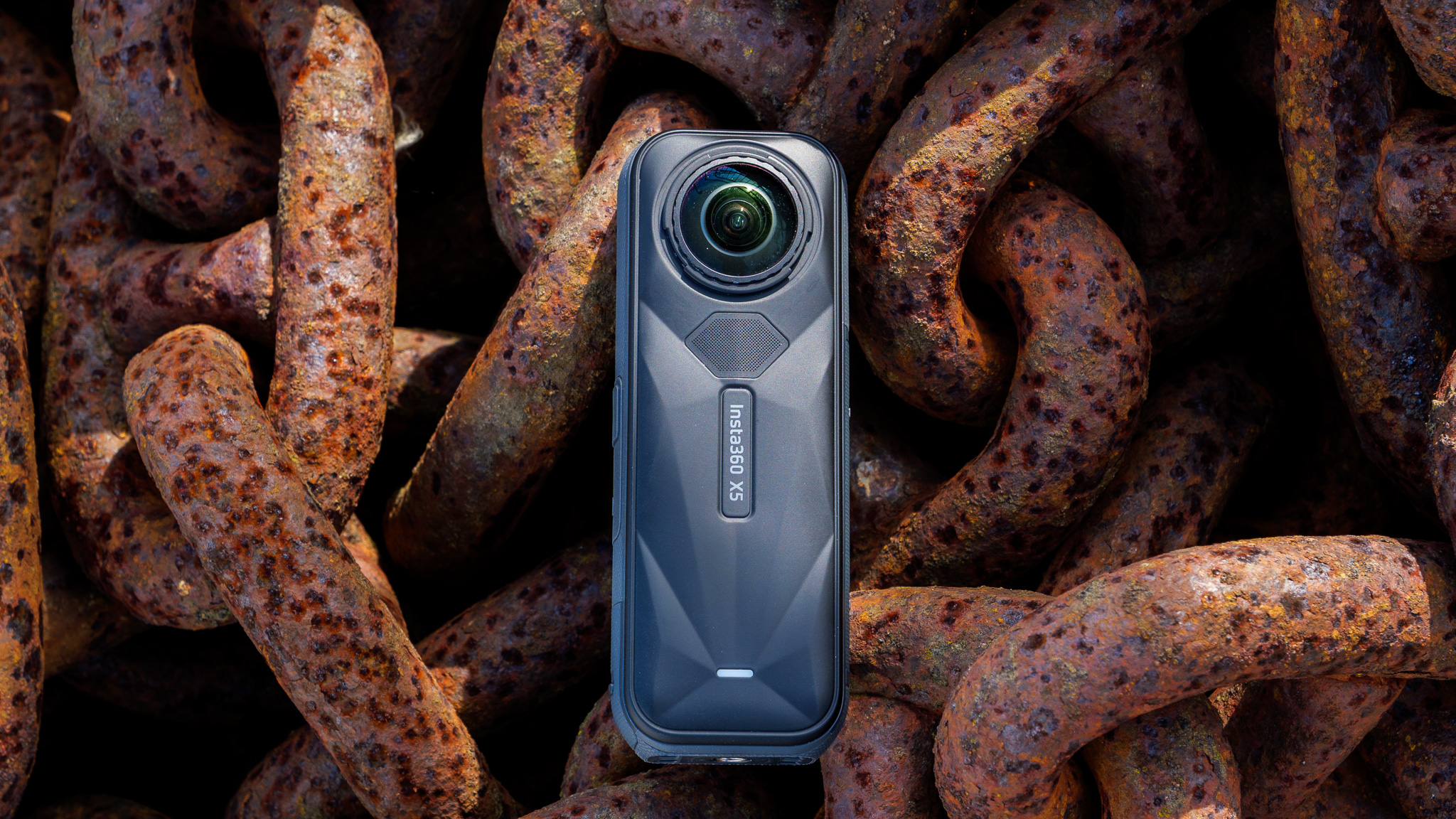


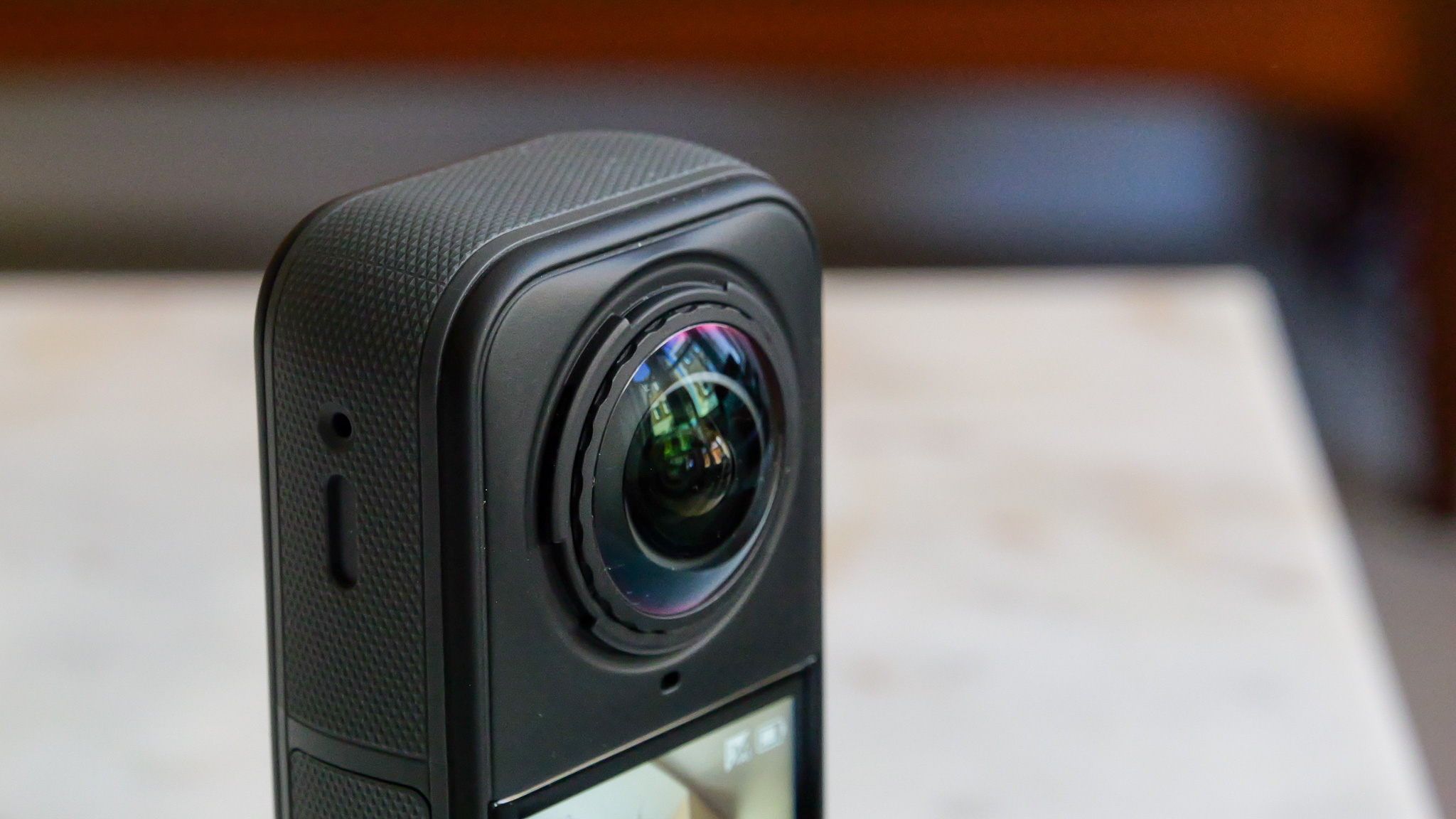

Specifications
Reasons to buy
Reasons to avoid
✅ You want a 360 camera for all conditions: The X5's large image sensors mean it works brilliantly underwater or even at night.
✅ You hate manual video editing: Insta360's mobile app can do a wonderful job of auto-editing your disparate clips into a watchable video in a matter of seconds.
❌ You already own an Insta350 X4: While the X5 is a notable all-round improvement on its predecessor, the older model remains a solid performer.
❌ You don't need 360º footage: If you’re just looking for a small waterproof camera to capture what’s in front of you while you’re cycling, skating or surfing, a standard action camera makes more sense.
The Insta360 X4 was fantastic when arrived in 2024; its successor is even better. At first glance the X5 looks virtually identical – same chocolate bar shape, same 2.5-inch touchscreen, same thoughtful button layout – but meaningful improvements across the board make this superior in almost every respect. The biggest upgrade comes from the larger 1/1.28-inch sensors (144% bigger than the X4's), paired with three image processing chips that dramatically improve image quality in all conditions, but particularly in low light. This is the first 360 camera I'd genuinely be happy using after dark – the new PureVideo mode keeps footage remarkably clean and crisp in situations where the X4's would've been muddy and unusable.
Build quality has improved too, with IP68 waterproofing to 15 metres (up from 10m), stronger glass lenses with double the drop resistance, and – crucially – easily replaceable lenses that you can swap at home for just a few quid. The companion app's AI-assisted auto-editing makes creating great-looking videos incredibly quick, though those wanting more control can still edit manually. Battery life drains fast when shooting 8K, but charging is rapid. The X5 delivers wonderful levels of detail, rich colours and wide dynamic range – it's simply the best overall 360 camera currently on the market. X4 owners might struggle to justify upgrading immediately, but for everyone else, this is brilliant.
Read our in-depth Insta360 X5 review
The best miniature waterproof camera

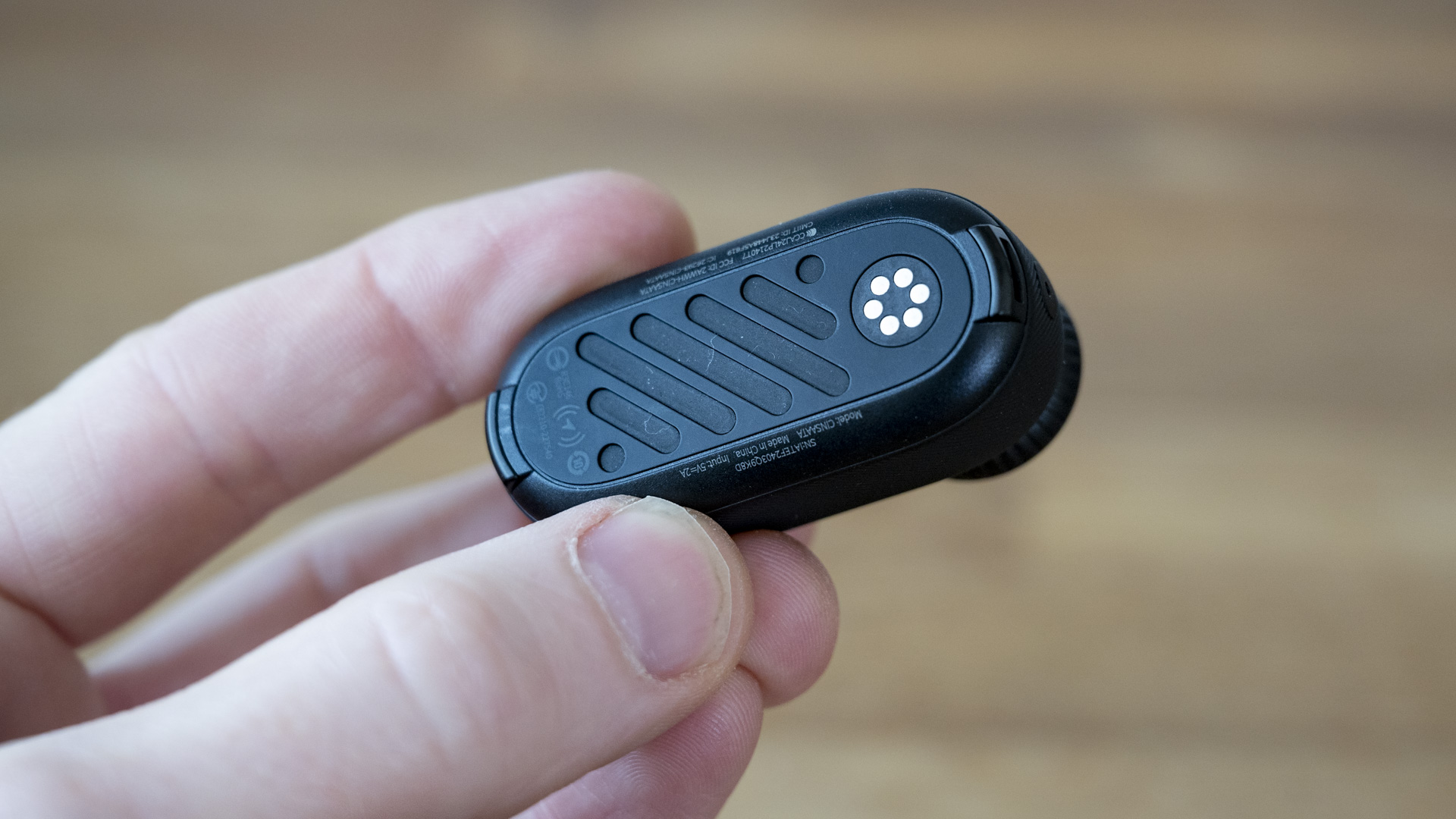
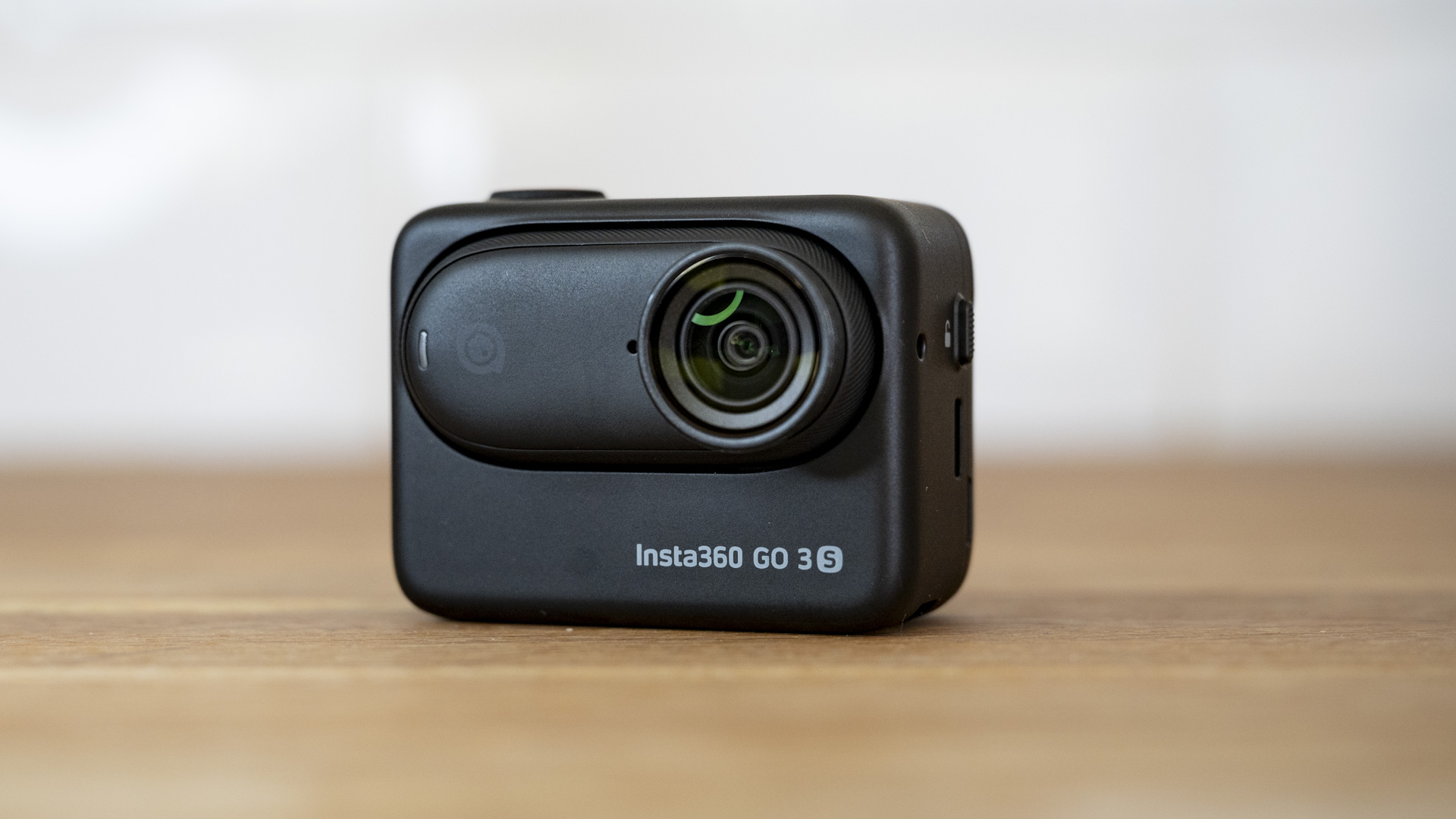
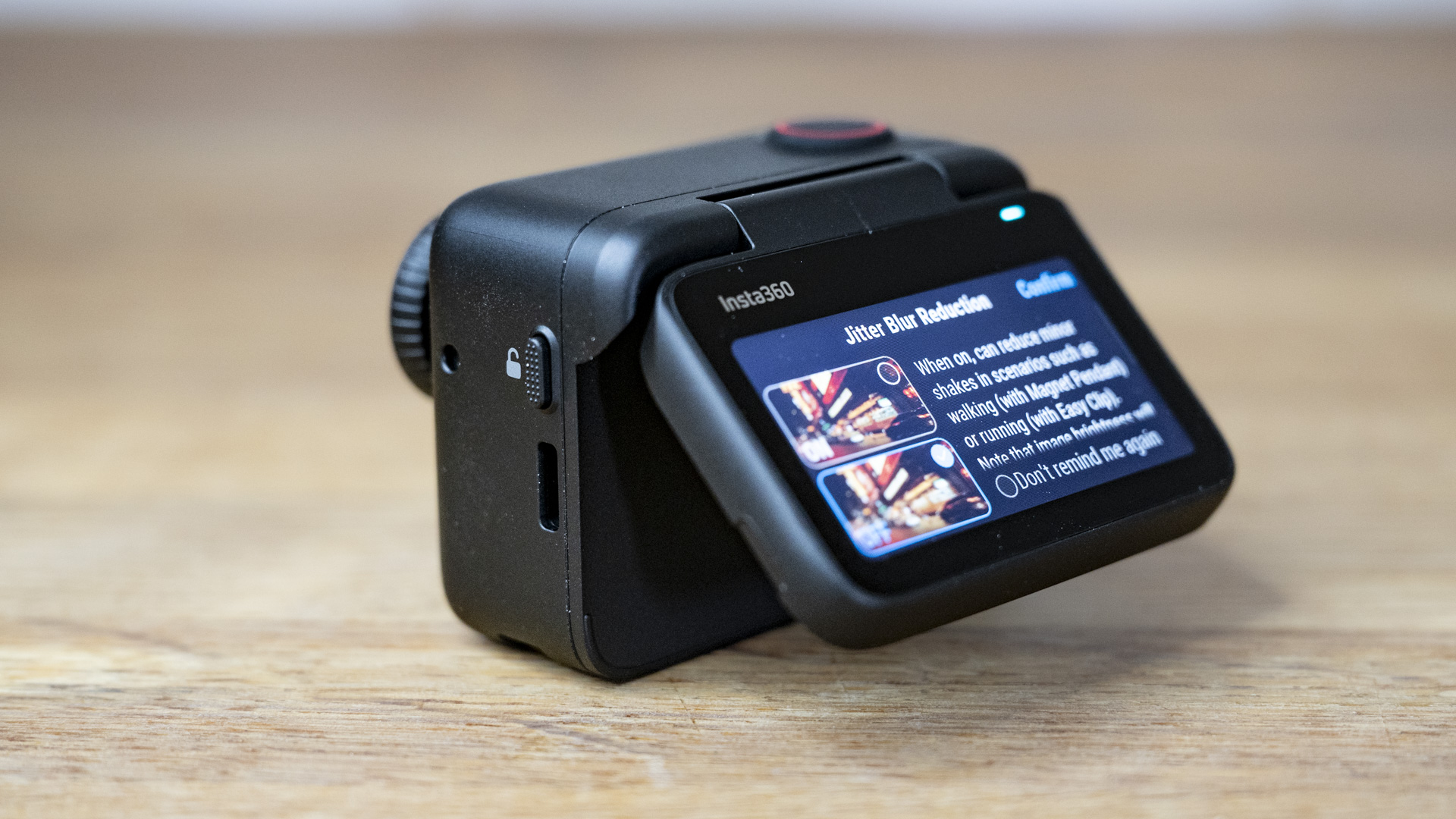
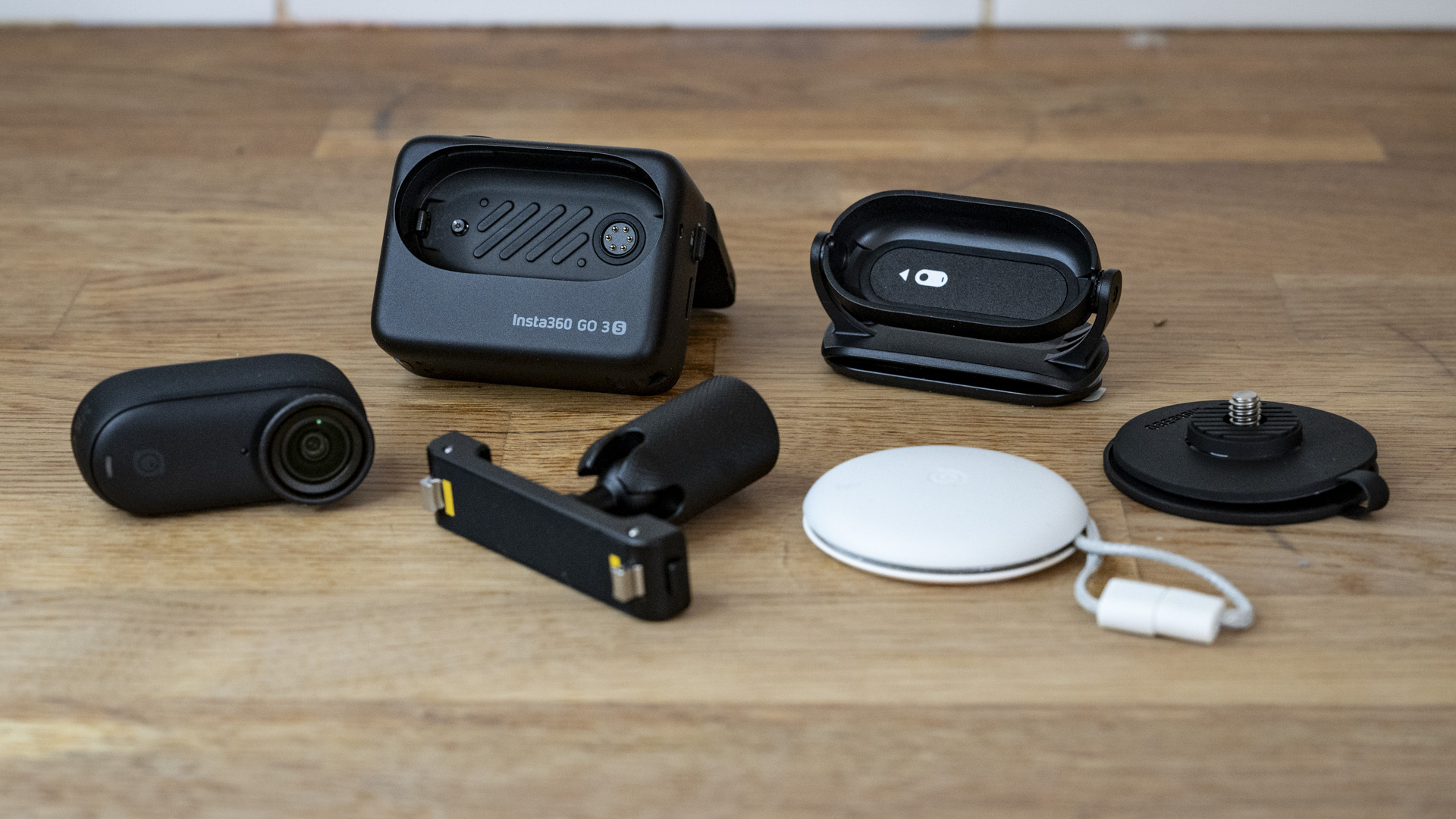
Specifications
Reasons to buy
Reasons to avoid
✅ You want a miniature action camera: The beauty of the Insta360 Go 3S is it's small as waterproof cameras come, letting you capture unique angles.
✅ You want to to forget about framing: The FreeFrame mode lets you shoot footage without framing, then loss lessly crop it later on.
❌ You want to capture the sharpest video: With a maximum video resolution of 4K, the Insta360 Go 3S isn’t the sharpest tool for waterproof video in this list.
❌ You want a completely waterproof solution: The camera itself is waterproof to 10m, but the add-on ActionPod with its screen extra features is only water-resistant so you can only take the camera for underwater shots.
If you want a tiny waterproof camera for your next beach trip, we think the Insta360 Go 3S could be just the ticket. What it lacks in video quality and stabilization tricks, it makes up for in miniature versatility: the camera features a magnetic mount that can stick to all sorts of surfaces and is so small that you can position it for unique perspectives – this is creative filmmaking. It also comes with an arsenal of modular accessories. The main peripheral is the Action Pod, which features a flip-up touchscreen that makes framing easier. Sadly, this isn’t waterproof, so you’ll need to leave it in your dry bag when you take the core camera unit into the sea, and which means you are shooting blind.
With 4K/30p video, the Go 3S’s video specs can’t compete with rival action cameras on resolution or frame rates, nor can the low light image quality. That said, videos from our review had decent contrast and dynamic range, plus the AquaVision 2.0 setting in the Insta360 app is also a useful addition, leveraging AI to enhance colors and combat underwater glare. It can’t add missing detail, but it does make a difference.
Read our in-depth Insta360 Go 3S review
Also consider
We've tested way more waterproof cameras beyond those included in the guide above. Here are the best of the rest:
Best with viewfinder – Panasonic Lumix TS7 / FT7: Launched in 2018, the Panasonic Lumix TS7 (known as the Lumix FT7 outside the US) is several years old now but it remains relevant by virtue of one feature in particular: a built-in electronic viewfinder (EVF), something rarely seen on a waterproof camera. The 1,170k-dot, 0.2-inch display might not be the largest out there, but it does offer a useful alternative to shooting with the rear display, especially in bright light, which can make composition tricky.
Best for 8K video – Insta360 Ace Pro 2: Besides GoPro and DJI, Insta360 is another leading action camera maker, and its flagship Ace Pro 2 is the only camera of its kind able to shoot 8K video. It's waterproof credentials aren't bad either, down to 36ft / 12m, with an optional dive case increasing that performance to 197ft / 60m. Annoyingly, you'll need to remove the wind guard; a metal grille, lined with acoustic foam, that protects the front mic port from wind noise, before going underwater. But you'll be rewarded with super detailed videos and photos.
Best Ricoh – Ricoh WG-8: A modest upgrade of the WG-6, the WG-8 is practically indistinguishable from the older WG-6, besides the fact that the latter is available in green or black, rather than organe or black. Like the WG-6, it features a 20MP camera and a 5x zoom lens, with 28-140mm f/3.5-4.5 range. Other features include built-in GPS for geolocation, and a macro mode aided by a built-in ringlight.
Upcoming waterproof cameras
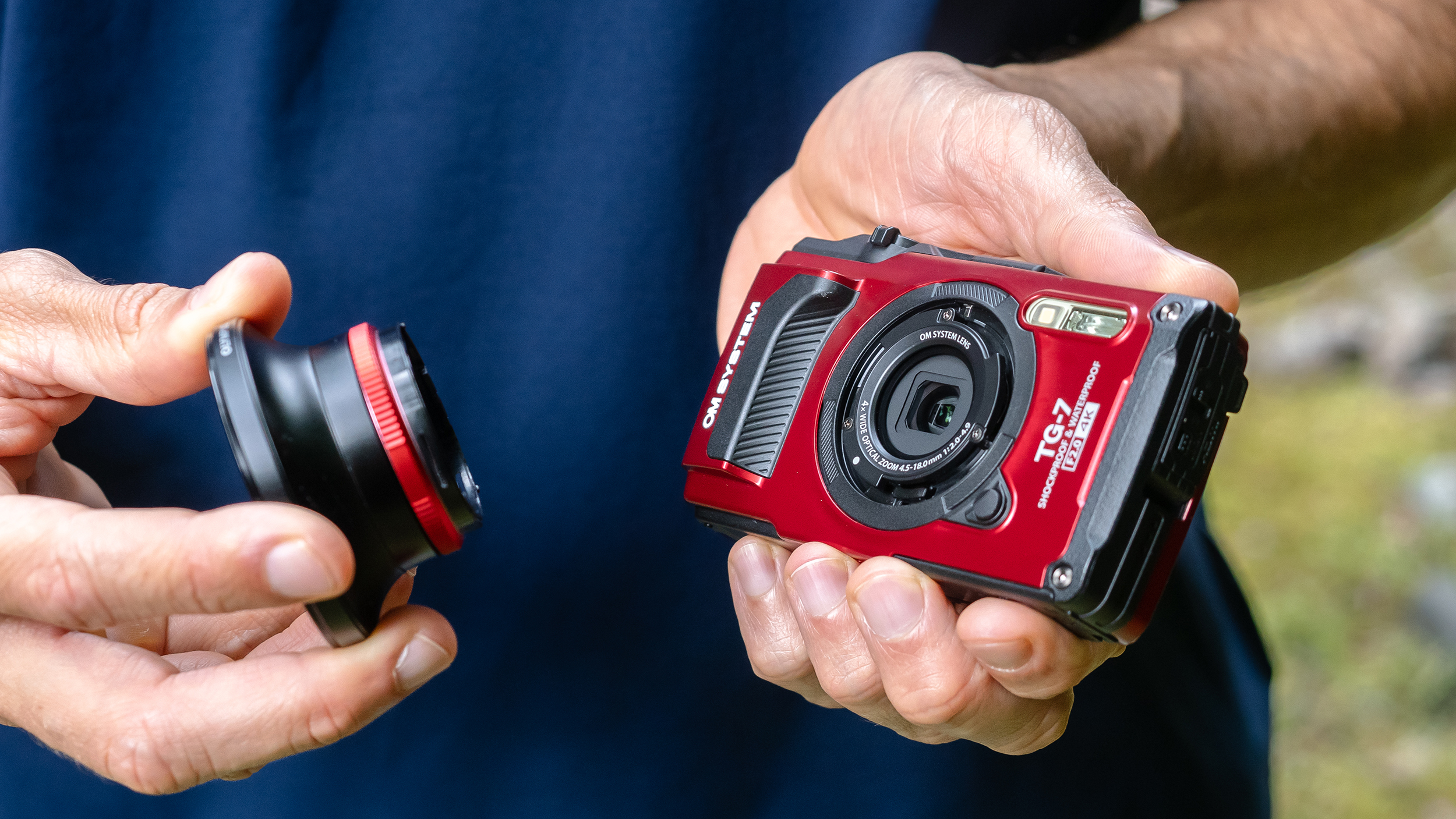
Dedicated waterproof cameras don’t come along too often, but TechRadar keeps a close eye on the space. Most waterproof photography tools today come in the form of action cameras, but manufacturers such as Pentax, Panasonic and OM System still fill the niched with rugged compacts designed for outdoor photography.
There are no confirmed camera releases in the pipeline for any of those three names. There’s always a chance that we’ll see a Pentax WG-9 or a new Lumix waterproof compact in the near future, but we think the most likely candidate for an update is the OM System Tough TG-7. While it’s our favorite waterproof camera, it would benefit from a larger sensor and improved video capabilities. We don’t know whether OM System has plans to upgrade it.
What we do know is that new action cameras will hit the market soon(ish). GoPro has all but confirmed that the Hero 14 Black is in the works, but that it won't be released until 2026, breaking the decade-long cycle of a new Hero Black camera every year.
At the time of writing, these are the most anticipated releases we’re watching. We’ll be updating this guide as soon as we get any of them in our hands for testing.
How to choose the best waterproof camera for you
How to choose the best waterproof camera?
Waterproof rating
A key consideration when choosing a waterproof camera is its waterproof rating. If you only need a camera for beach trips, something with a rating of 10m should be fine, such as the Insta360 Go 3S. If you’re planning more adventurous underwater pursuits, look for something rated for deeper waters. The DJI Osmo Action 6 is rated to 20m, while the Panasonic Lumix TS7 is good down to 31m, which should be enough for most recreational dives.
Design
The best waterproof cameras are optimized for use underwater. That usually means tactile physical buttons that are easy to access and operate. Many also feature specialized shooting modes which adjust settings for underwater conditions, compensating for factors such as color distortion.
A good waterproof camera should be more than just water-resistant. You’ll want something with a robust construction that can withstand the rigors of your outdoor adventures. Consider factors such as shock resistance, dustproofing plus working temperatures, as well as the overall build quality.
Image quality
If you’re planning to swim at dusk or dive deep, look for a camera with good low-light skills, such as the DJI Osmo Action 6, or one with built-in LED lights, like the Ricoh WG-80. For some cameras, these can be fitted as optional accessories. You might want to also consider the macro skills if you hope to capture the little details such as ocean life.
Lens
Many waterproof cameras have housings that limit the range of any optical zoom. That said, some models do offer a modest zoom range, such as the 4x zoom on the OM System Tough TG-7, which gives you additional flexibility to select sub-aquatic subjects.
Sign up for breaking news, reviews, opinion, top tech deals, and more.

Tim is the Cameras editor at TechRadar. He has enjoyed more than 15 years in the photo video industry with most of those in the world of tech journalism. During his time as Deputy Technical Editor with Amateur Photographer, as a freelancer and consequently editor at Tech Radar, Tim has developed a deeply technical knowledge and practical experience with cameras, educating others through news, reviews and features. He’s also worked in video production for Studio 44 with clients including Canon, and volunteers his spare time to consult a non-profit, diverse stories team based in Nairobi. Tim is curious, a keen creative, avid footballer and runner, and moderate flat white drinker who has lived in Kenya and believes we have much to enjoy and learn from each other.
- Mark WilsonSenior news editor
- Chris Rowlands